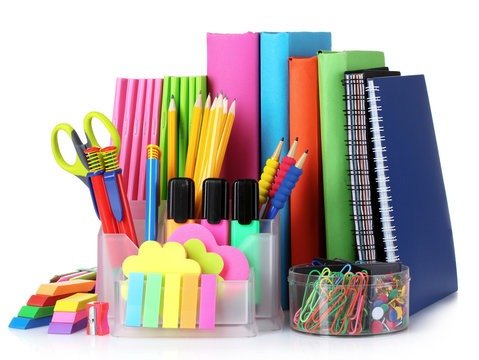15 Ways Schools Are Failing Our Children Today

Source: http://www.msn.com
In today’s rapidly evolving world, schools are supposed to be the institutions where children gain the knowledge, skills, and experiences they need to thrive. However, many schools are falling short of this goal, leaving countless students behind. Despite the significant investments in education, there are systemic issues that prevent children from receiving the quality education they deserve. From outdated teaching methods to insufficient mental health support, there are numerous ways schools are failing our children. It’s time to take a look at these issues and push for the changes needed to equip the next generation for success.
1. Outdated Curriculum
Many schools are still relying on outdated curricula that don’t reflect the current needs of the job market or modern society. Students are not being taught the practical skills needed for today’s world, such as financial literacy, coding, or emotional intelligence, while traditional subjects like math and science remain disconnected from real-world applications.
2. Lack of Critical Thinking Emphasis
Today’s education system often emphasizes rote memorization over critical thinking. Students are tested on their ability to remember facts rather than their ability to think critically and solve complex problems. This stifles creativity and prevents children from developing the problem-solving skills they will need as adults.
3. Overemphasis on Standardized Testing
With the increasing focus on standardized testing, teachers are pressured to “teach to the test,” often neglecting subjects like art, music, and physical education. This one-size-fits-all approach fails to account for different learning styles and reduces the depth and breadth of education.
4. Insufficient Mental Health Support
As mental health issues among children rise, schools are ill-equipped to support students in need. With limited access to counselors and mental health resources, children struggling with anxiety, depression, or other mental health challenges often go unnoticed or untreated, affecting their overall well-being and academic success.
5. Teacher Burnout
Teachers are underpaid, overworked, and often undervalued, leading to high burnout rates. This affects the quality of instruction, as teachers may be too stressed or fatigued to engage students effectively. The lack of support for educators impacts the learning environment for everyone.
6. Underfunded Schools
Many schools, particularly in lower-income areas, suffer from a lack of funding, resulting in outdated textbooks, poor facilities, and limited access to technology. This disparity in funding leads to unequal educational opportunities, leaving children in disadvantaged communities with fewer resources to succeed.
7. Inadequate Special Education Services
Students with disabilities often do not receive the appropriate support they need to thrive in the classroom. Special education programs are often underfunded, and there’s a lack of well-trained staff to help children with specific learning needs. As a result, these students may struggle to keep up with their peers.
8. Lack of Real-World Skills
Schools often focus too much on academic subjects and not enough on teaching practical life skills like communication, collaboration, problem-solving, and time management. These are the skills that will serve students well in the workforce and everyday life, yet they are often neglected in favor of textbook knowledge.
9. Excessive Homework
Many students spend hours each night completing excessive amounts of homework, leaving little time for rest, extracurricular activities, or family life. This can lead to stress, burnout, and a lack of enthusiasm for learning, ultimately hurting academic performance and personal development.
10. Limited Career Guidance
Schools often fail to provide adequate career counseling, leaving students unsure of the career paths available to them. Without proper guidance, students may miss out on opportunities or fail to recognize their potential in fields they might not have considered.
11. Bullying and School Violence
Bullying remains a serious problem in many schools, and incidents of school violence are on the rise. Despite efforts to address these issues, many schools still lack effective anti-bullying programs, creating an unsafe and toxic environment for students.
12. Lack of Diversity and Inclusion
In many schools, there is insufficient emphasis on teaching diversity and inclusion. Without a strong focus on these values, students may not develop the understanding and respect for different cultures, backgrounds, and perspectives, leading to a lack of empathy and tolerance.
13. Overcrowded Classrooms
With an increasing number of students and limited resources, classrooms are becoming more overcrowded, making it difficult for teachers to give individual attention to students. This results in some students falling behind, as teachers struggle to meet the needs of a diverse group of learners.
14. Failure to Adapt to Technology
In an age where technology is central to almost every aspect of life, many schools are not leveraging technology effectively. Outdated computer labs, lack of online learning resources, and limited access to tech training prevent students from developing the digital literacy skills that are crucial for their future success.
15. Parental Involvement
Schools often fail to engage parents in the educational process. Without strong communication and involvement from families, students may not receive the support they need at home, and schools may miss out on valuable insights that could improve the learning experience.
Wrapping Up
The issues facing today’s education system are complex, but they are not insurmountable. To ensure that our children are prepared for future, we must address the shortcomings of our schools head-on. This means improving curricula, investing in teacher support, prioritizing mental health resources, and ensuring that all students have access to the resources and opportunities they deserve. By committing to these changes, we can build a more equitable, inclusive, and effective education system.
Read more about this story here: https://childreninfobank.com/safebank/15-ways-schools-are-failing-our-children-today/
Image Source: http://www.msn.com





